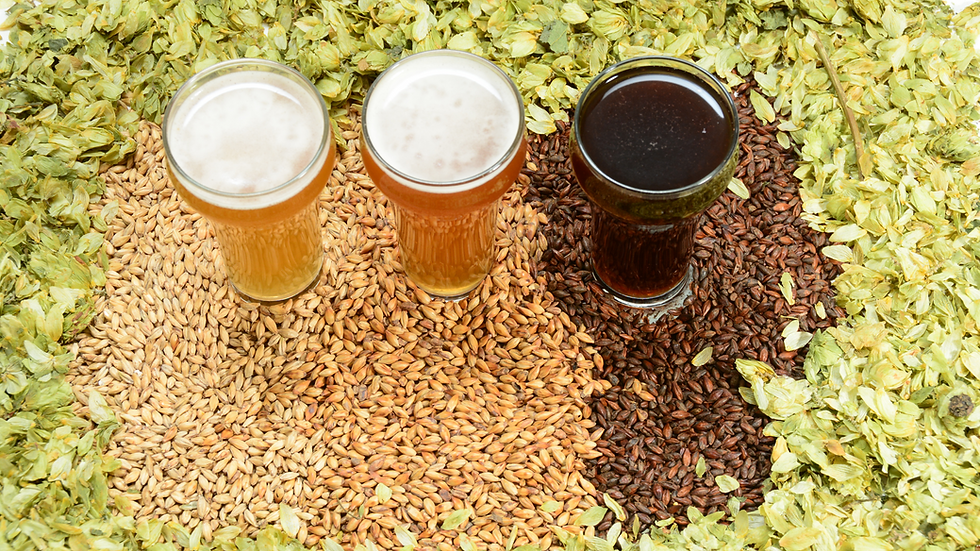Sweet, Bitter, Sour, Funky: Understanding the 4 Major Beer Flavor Profiles
- Andrew Marr

- Jun 6
- 2 min read

How can one drink made from just four ingredients—water, malt, hops, and yeast—produce such an insane variety of flavors? Welcome to the world of craft beer, where subtle tweaks to technique and ingredients create endless possibilities.
If you want to taste beer like a pro (or at least sound cool talking about it), here are four core flavor profiles to know: sweet, bitter, sour, and funky. Let’s break them down:
Sweet
Sweetness in beer comes from malt sugars that remain after fermentation. Brewers use different types of malted barley (and sometimes wheat or oats) to layer in flavors:
Light malts = bread, biscuit, honey
Medium malts = caramel, toffee
Dark malts = chocolate, coffee, molasses
How it’s made: Brewers control sweetness by adjusting mash temperature, grain bill, and fermentation time. Less attenuation = sweeter beer.
Bitter
Bitterness comes from hops—the flowers of the Humulus lupulus plant. Brewers add hops at different stages of the boil:
Early addition = more bitterness
Late addition = more aroma/flavor
West Coast IPAs are famous for big bitterness (pine, resin, grapefruit). Hops balance malt sweetness and add complexity.
Sour
Sour beers are made by introducing lactic acid bacteria (like Lactobacillus) or wild yeast (like Brettanomyces):
Kettle souring = quick souring in the brew kettle
Mixed fermentation = longer aging with wild cultures (often in barrels)
Sours can be crisp and refreshing (Berliner Weisse) or complex and funky (Lambic, Flanders Red).
Funky
“Funk” comes from wild yeast strains—mainly Brettanomyces—which produce earthy, barnyard-y, fruity, or leathery flavors. Funky beers are often aged in barrels or fermented with mixed cultures.
Next time you drink a beer, try to identify these profiles—and use your Craft & Brew Passport to taste NJ beers that showcase each one.
.png)


